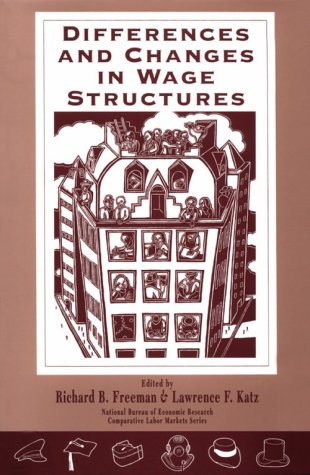(NBER) National Bureau of Economic Research Comparative Labor Markets(CHUP)
2 total works
Differences and Changes in Wage Structures
by Richard B. Freeman and Lawrence F. Katz
Published 15 October 1995
During the past two decades, wages of skilled workers in the United States rose while those of unskilled workers fell; less-educated young men in particular have suffered unprecedented losses in real earnings. These 12 essays explore whether this trend is unique to the United States or is part of a general growth in inequality in advanced countries. Focusing on labour market institutions, and the supply and demand forces that affect wages, the papers compare patterns of earnings inequality and pay differentials in the United States, Australia, Korea, Japan, Western Europe and the changing economies of Eastern Europe. Cross-country studies examine issues such as managerial compensation, gender differences in earnings, and the relationship of pay to regional unemployment. The contributors attribute changes in relative wages and unemployment among countries both to differences in labour market institutions, and training and education systems, and to long-term shifts in supply and demand for skilled workers. These shifts are driven in part by skill-biased technological change and the growing internationalization of advanced industrial economies.
This volume, the first in a new series by the National Bureau of Economic Research that compares labour markets in different countries, examines social and labour market policies in Canada and the United States during the 1980s. It shows that subtle differences in unemployment compensation, unionization, immigration policies, and income maintenance programmes have significantly affected economic outcomes in the two countries. Examples of these differences include the following: Canada's social safety net, more generous than the American one, produced markedly lower poverty rates in the 1980s. Canada saw a smaller increase in earnings inequality than the United States did, in part because of the strength of Canadian unions, which have twice the participation that US unions do. Canada's unemployment figures were much higher than those in the United States, not because the Canadian economy failed to create jobs but because a higher percentage of non-working time was reported as unemployment. These disparities have become noteworthy as policy makers cite the experiences of the other country to support or oppose particular initiatives.

